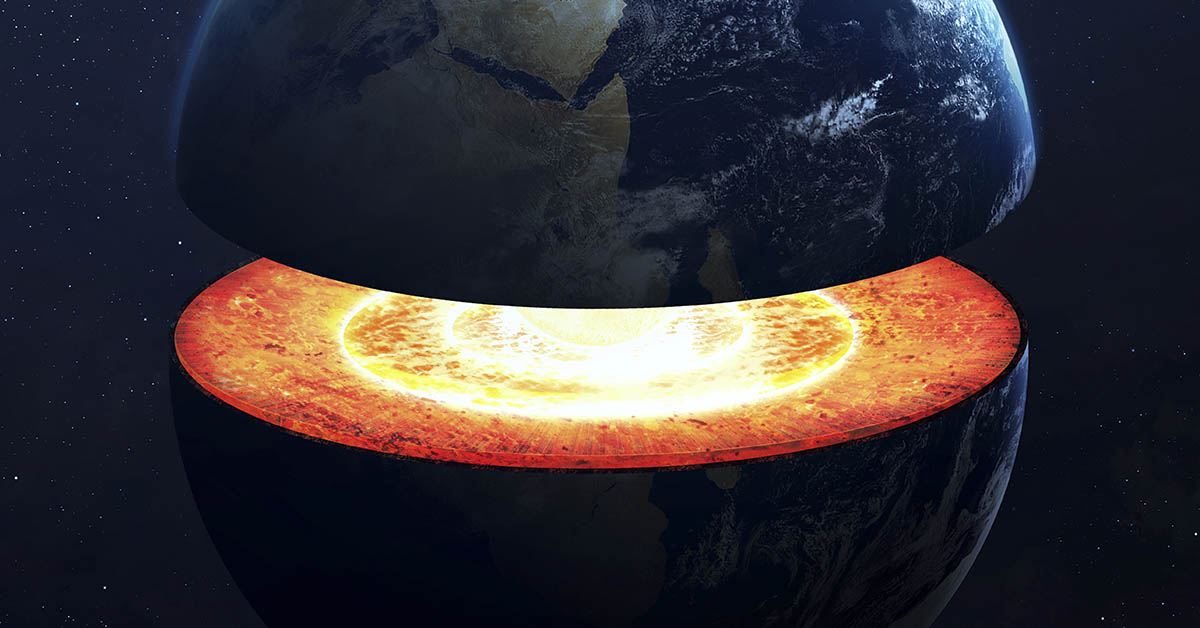Even though it is just below our feet, we don’t actually know very much about the inner layers of the Earth, in particular, the Earth’s core. Scientists have detected many seismic anomalies that have occurred between the Earth’s core and mantle. Recently, however, they have discovered that this perhaps has something to do with the core itself.
Seismic Anomalies May Be Caused By The Earth’s Core
Understanding what goes on in our planet’s layers, especially at its core, is important for understanding how our planet functions. According to the research recently published in Nature, the boundary between the Earth’s and mantle represents an interface between the solid silicate mantle and the liquid metallic outer core. The structure and dynamics in this region, the researchers say, are fundamental for understanding heat and material transfer in our planet. Using seismic imaging, the scientists discovered fine-scale structures at the boundary between the core and mantle. These structures have a different velocity and density than the surrounding normal mantle or core region. For this reason, researchers have called them “anomalies.” (1)
The Composition of Our Planet
Earth is a complex planet. The planet’s core consists of an inner and outer layer; the inner is solid iron, while the outer is liquid and composed of a mix of iron and nickel. As it crystallizes, it creates a magnetic field that affects Earth’s surface. This was reported in the journal Nature Geoscience. The findings suggest that this liquid outer core could explain some anomalies on Earth’s surface, such as those related to its magnetic field, temperature, or seismic activity. It also suggests further research into how nature interacts with these changes within Earth’s core to create our ever-changing environment on its surface.
Read: Scientists Detect Signs of a Hidden Structure Inside Earth’s Core
The Study
The researchers focused on the part of out plant’s core called the “outer core.” The outer core is about 3000 km below the surface and comprises a thick liquid iron alloy. This alloy greatly impacts the habitability of the Earth’s surface and the creation of its magnetic field. Scientists can’t actually reach Earth’s actual inner core, so instead, they create similar conditions in the lab to conduct their research.
“We conducted experiments to see what happens when we combine iron-hydrogen alloy liquid with silicon under high pressure and high temperature conditions, like those found in the outer core,” said one of the researchers. “We discovered that silicon-rich crystals form in the iron metal liquid (or silicon-rich snow), and they are lighter than the outer core liquid, causing them to rise to the boundary between the metallic core and the rocky mantle (rather than sink).” (2)
It is believed that changes in the temperature and composition of Earth’s inner core can cause cyclical phenomena that may cause surface disruptions. Further research is needed to better understand how the core affects our planet’s environment and inhabitants.
A Great Mystery
The Earth’s core is an interesting and complex structure, consisting of a solid inner core and a liquid metallic outer core. The whole planet’s rotation and magnetic field are powered by the material transfer from the inner to the outer core. Despite all this, scientists are still trying to understand many mysteries about the Earth’s core.
For example, what role does the liquid metallic outer core play in powering these phenomena? How does it interact with other materials within the mantle? The Earth’s mantle comprises solid silicate rock, which surrounds and supports both cores. This understanding allows us to hypothesize how material transfers between them might produce anomalies in different parts of our planet and how they might be linked with weather patterns or plate tectonics. While we still may not know much about the inner workings of our planet, this is certainly a big step forward in understanding more.
Keep Reading: Earth’s Spinning Inner Core Recently Paused Then Flipped Its Direction

